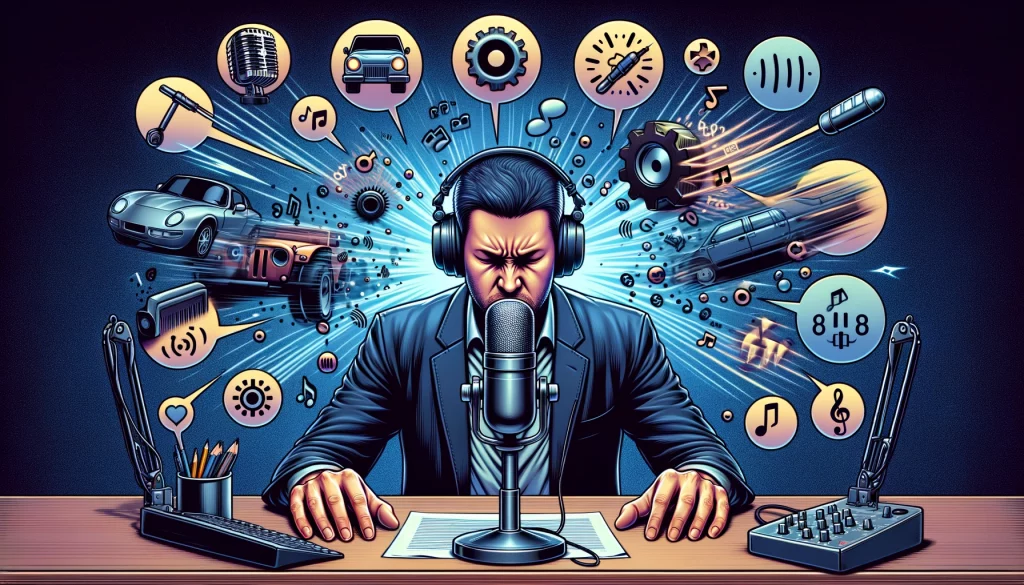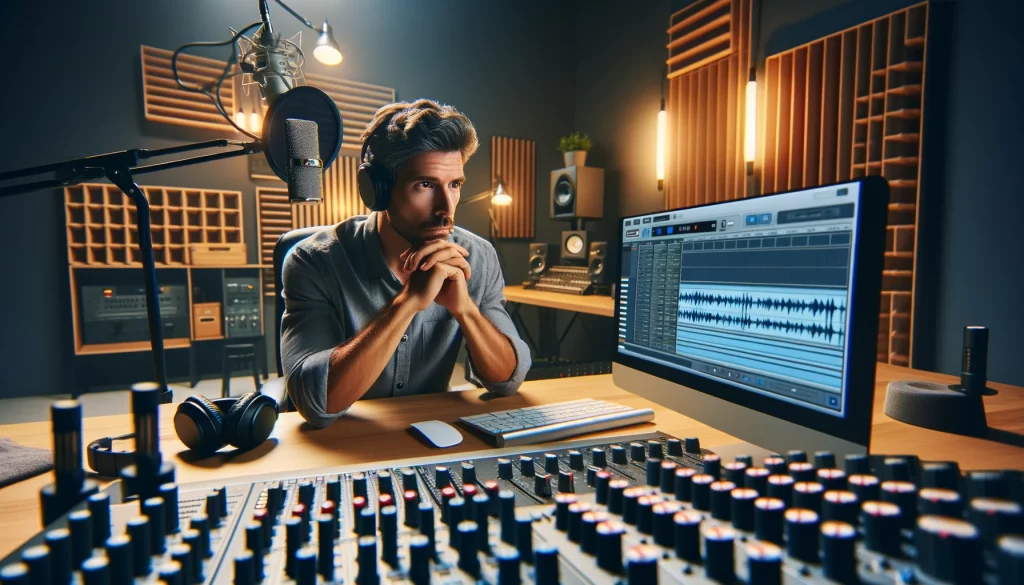In the ever-changing world of podcasting, background noise can degrade audio quality. These aural incursions threaten the podcast’s professionalism and listening experience, from the low drone of domestic appliances to the surprising disruptions of ambient noises. Traditionally, podcasters have used soundproofing and high-quality microphones to reduce noise. But that couldn’t help them properly at all! Sound Reducer, driven by AI, has changed audio editing, giving podcasters a powerful tool for flawless sound.
Modern technologies use artificial intelligence to discriminate between speech and disturbances, removing the noise while keeping the original. The new method speeds post-production and improves product quality, allowing listeners to concentrate on the content. As podcasting grows, AI noise reduction means are crucial to eliminating background noise and creating a new bar for audio perfection.
What background noise do podcasters generally face?

Each sort of background noise presents unique obstacles for podcasters. Understanding these noise categories is essential for reducing audio quality loss:
Ambient Noise:
This includes background sounds like air conditioner hums, fluorescent light buzzes, and traffic rumbles. Ambient noise is persistent and ubiquitous, making it easier to eradicate with equipment or software.
Room echo/reverberation:
Sound waves bounce off walls, ceilings, and floors, muddying recorded speech. Large, minimally furnished, or hard-surfaced rooms often have this.
Handling Noise:
Paper rustling, desk tapping, and mouse clicking are examples of handling noise while recording. Sporadic and unexpected sounds are complex to edit out after recording.
Electrical Hum and Interference:
Grounding difficulties or electromagnetic interference from surrounding items can cause electrical equipment and wires to buzz or hum into recordings. This noise is sneaky since it may not be noticed until editing.
Wind Noise:
When using the microphone outside or in a place with bad air flow, wind can make a loud, low-frequency rumble or whistling sound that can be annoying. It’s hard to figure out and deal with wind noise because it changes all the time.
Vocal Artifacts:
Speakers make unwanted sounds, including plosives (complex ‘P’ and ‘B’ sounds that burst air), sibilance (hissing ‘S’ and ‘Sh’), and mouth noises. Though not background noise, they can reduce audio quality and need precise microphone placement and post-production editing.
Random Noises:
Sirens, dog barking, door bangs, and phone calls might occur unexpectedly during a recording session. These sounds distract both the podcaster and the audience.
Can Sound Reducer Remove All Types of Noise?

Yes, all of those types of noises can be taken out of audio files by the sound reducer by AI. It is built to separate noise from the sound’s central message. AI algorithms can successfully separate and eliminate disturbances by looking at the patterns of sound waves and figuring out what makes noise different from the wanted audio, like human speech.
Deep learning methods are used in this process to teach the AI how to spot and tell the difference between different sounds. Once the noise is found, the AI uses precise filtering to target and eliminate it, leaving the important sounds more accurate and more focused.
Because they can figure out and change the sound structure at its most basic level, AI sound reducers can successfully eliminate a wide range of noises, improving the output audio quality.
How to use the sound reducer?

The Sound Reducer tool lets you eliminate noise better than any other tool, and it’s also straightforward to use. Here are the shortened steps for using the Sound Reducer:
First, download it from the Play Store and get started. If you are a Mac or IOS user, then this version is for you.
Adjust the settings between the app and your device if you are a new user.
Now, upload your raw podcast file. However, there is a built-in mic, so you can record your podcast directly from the app. It will denoise your file automatically.
After uploading your file, click Denoise to cut down the unwanted noise. It will take a few seconds to extract the noise.
Now, play the denoised file along with the original file. It will help you to check the accuracy and difference.
You can also check your processed file in the output section.
It’s time to save the file. You will see a range of saving formats by clicking on the save option. So, pick your desired format and save it.
Conclusion
Overall, we hope using the Sound Reducer tool was easy and fun for you. Even though it’s tiny, its powerful features are meant to make your recordings sound much better. However, we can’t wait to hear what you think about the app. People who have used the Sound Reducer app so far have mostly said positive things about it. Many have thanked the developers for making it. We value your feedback and can’t wait to hear how the tool has helped your audio projects.
FAQ
How does AI sound reducer differ from other methods?
Traditional approaches use basic filters or manual tweaks, which might lower voice quality. AI sound reduction dynamically adjusts to diverse noises and selectively eliminates them without affecting speech quality.
Can i use AI Noise Reduction for live streaming?
No, You can only use the AI noise reduction or sound reducer app for post recording. It can’t eliminate noise in real-time, like during meetings, lectures, or live streams. But the developers are working on it so that our users can soon be able to reduce real-time noise.
Does the sound reducer need any special hardware to work with?
No, you can use the AI sound reducer tool with regular devices such as mobile phones or desktops.
Will the sound reducer impact the effectiveness of my primary speech?
Of course not. The AI tool will only remove the noise from your file, not the main spoken words.
Can I use the sound reducer without an internet connection?
Yes, of course, there is! Please use the app versions we made even when you’re not connected to the internet.
Is there a web version of Sound Reducer?
Of course, there is an accessible web version for you. Here it is.
Is the sound reducer app free?
Yes, It’s totally free to use. Additionally, if you want to add a free version for a smoother workflow, then you may need to purchase it. Don’t worry about the price, it’s cheap!




